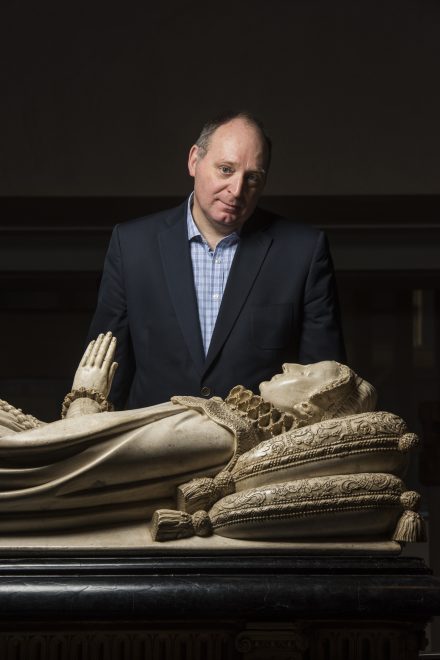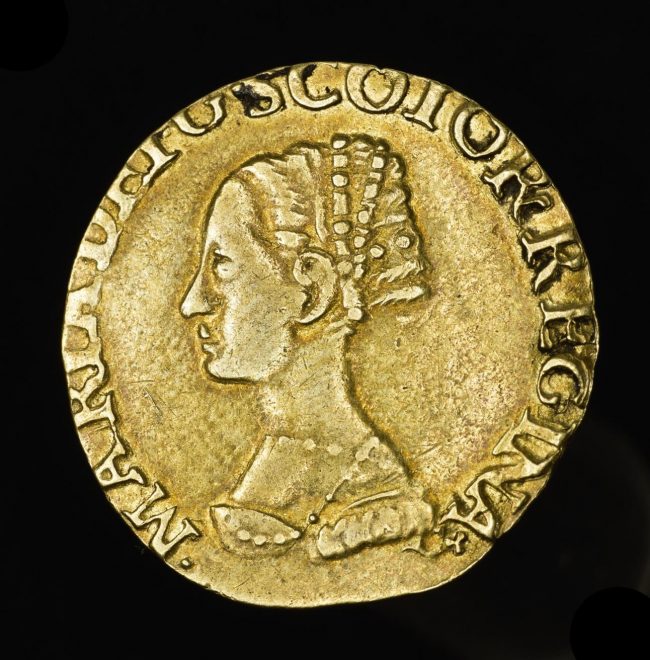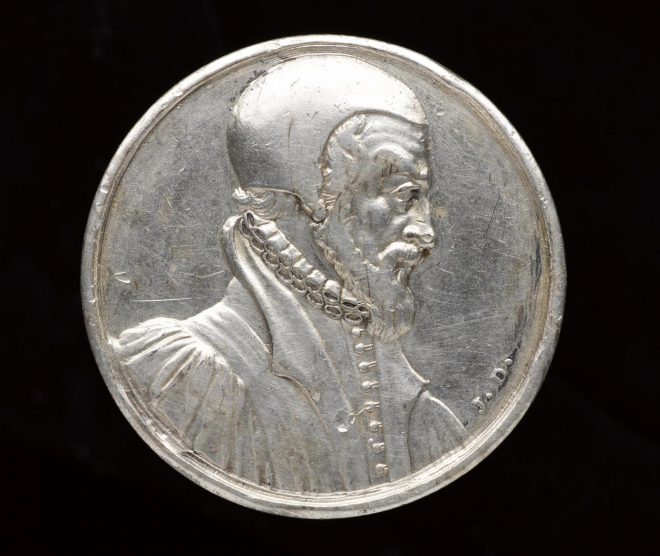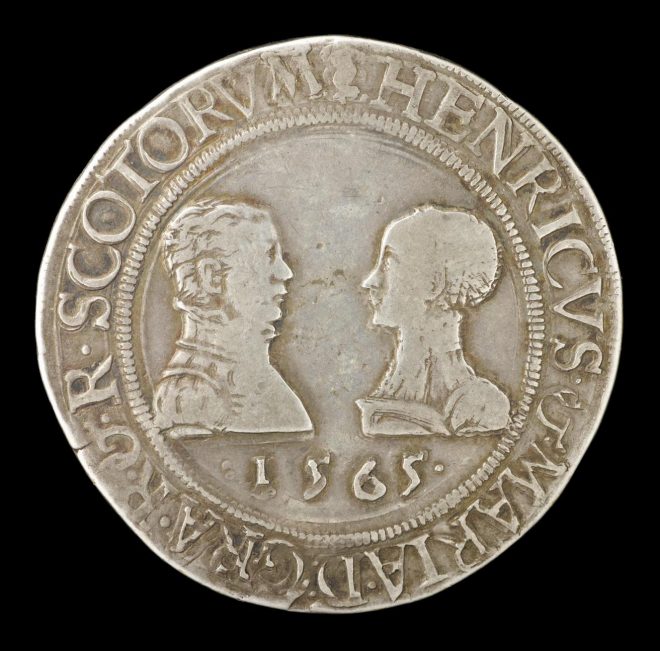As soon as the new Mary, Queen of Scots film was released in the UK, we sent our expert straight to the cinema. In this interview, David Forsyth, one of our Principal Curators, separates fact from fiction and gives us his honest review (spoiler alert).
What were your first impressions?
“I felt aspects of it – the real history – was possibly more exciting. I was disappointed because some of the factual episodes of Mary’s life were more interesting.
They have her arriving in Scotland in a deserted Hebridean beach, but in fact, when she arrived, she arrives in Leith – the city’s asleep and the captain of her ship fires a cannon to wake everybody up and everybody sort of appears bleary eyed to come down to the harbourside to see what happened or what was happening and to see the Queen of Scots arriving in their land.
And when I left the film, it was interesting – there were three people debating about her family tree – so that was quite interesting. They were obviously on Google or some website looking at some aspects of Stuart and Tudor history. I think that’s one thing the film will do – it will engender an interest in Mary, Queen of Scots in that tumultuous period of Scottish and English history.”

What was your favourite part of the film?
“I thought the scenes with Knox were good, but I did think that they captured the drama of the execution – particularly when Mary appears at the execution with her lady attendants dressed in black and then very dramatically, just before she steps up to the beheading block, divests herself of the black rode to reveal herself in this scarlet dress – and of course scarlet was the colour of Catholic martyrdom. I think the only thing that the film missed though was the fact that the historical records talk of a sharp intake of breath from the gathered English commissioners and lords. I felt that could have been played up more because they really gasped when she did that. So that was dramatic but that was a really good point, I thought.
I also thought Mary was portrayed well at the head of her army, because controversially she didn’t ride side-saddle, she wore breeches, she rode as a man would have ridden in the 16th century and she did lead her army from the front. I thought these aspects of the historical truths were actually really well done and portrayed dramatically, as they would have been dramatic at the time.”
Is there anything you would have changed about the film?
“Well as a historian I would have changed quite a few things. When I heard that they were going to have Mary and Elizabeth meeting in person, I was very disappointed and that famously didn’t happen, but actually you could see (and I think Saiorse Ronan has spoken about this), it was very much a dramatic device for the film.
There was certainly a huge exchange of letters between Mary and Elizabeth over the years, so that was quite a dramatic way of portraying the relationship between the two women, but I might have changed that – because it’s quite central. Mary was of the sound opinion that had she met her cousin, she would have persuaded her to name her as heir.”
Do you think she would have succeeded?
“She was very persuasive – and even Knox, who obviously could not thole Mary, could not thole her religion, the fact that she was a female Catholic ruler – even Knox has to admit after his five audiences with Mary that she was quite impressive (and also that she was quite attractive), so she was quite a persuasive woman, so who knows what may have happened, but that’s counterfactual history.”

In 2013, National Museums Scotland presented a major exhibition on the life of Mary and some of the production team dropped by for a tour, which you led. Can you tell us more about their visit?
“They were very keen to get it historically accurate within these dramatic devices and they probably have done that. Whether they took close account of the objects we had on display then…but I think even back in 2013, the film was quite advanced in production. I think it has a feel and a flavour for the period – particularly when she arrives in Edinburgh.
I wasn’t that impressed with the Palace of Holyroodhouse – it looked very much like something from Lord of the Rings rather than the palace as it was then in Edinburgh.
But the way the textiles and cloth of estate are unwrapped was interesting because certainly Mary did inject richness and vibrancy into that Scottish court, very much the Scottish Renaissance link – so that was an interesting way that they used the fabrics and the textures of the period.”
What would have been different about the Palace of Holyroodhouse?
“It wouldn’t have been as grand as that. It was like a big castle – its scale. But at the end of the day, it is a movie – it’s not a history book. It’s a film to entertain, first and foremost. With hopefully a bit of the historical fact woven in that will encourage people to go and find more about the real story of Mary, Queen of Scots.”
What did you think of their portrayal of Mary’s relationship with Knox?
“I thought that was well portrayed. I thought David Tennant was excellently cast and played a very good Knox. It showed the great debate that was going on. Mary knew that she was coming to a country that had recently embraced the reformation movement and she knew that she was going to be a Catholic monarch in a – by that point – increasingly Protestant country. So that was portrayed quite well.
I wasn’t too convinced about some text at the start, because Scotland was still Catholic when she left and the reason she leaves to go to France is for her protection because Henry VIII is trying to marry her off to his son Edward, during a period of incursions by England known as the Rough Wooing. But I think, by and large, they had Knox portrayed well.
And some of the other characters were very well drawn. Martin Compston was an excellent Bothwell. And I thought that the actor who played Darnley – he was a lusty, handsome, long-limbed man that Mary resolutely and utterly fell head over heels in love with – was played very well by that actor.”

What did you think of Saiorse’s portrayal of Mary?
“I thought Saiorse looked like Mary, Queen of Scots. She was very striking; she had the pale, Celtic completion, the red hair. She’s about a foot smaller than Mary, Queen of Scots because one of the things about Mary was that she was extremely tall for a woman for that age – she was 5ft11, but I think Sairose did portray that haughtiness, that self-belief that Mary had. She was an anointed Queen of Scots from an infant and that’s a thing that Mary carried throughout her life – even during her time in France. She was a queen in two countries: France and Scotland. So I thought that she did portray that extremely well.”
Some of the scenes seem unbelievable – straight out of a Hollywood screenplay. Was her life actually that dramatic?
“Although I’ve suggested that some of the real events I think were actually more dramatic, Rizzio’s death was well done. He was stabbed up to 57 times. Again, the only dramatic device that deviates from the historical fact was that Darnley’s father, Matthew Stewart, Earl of Lennox, wasn’t present. And Darnley didn’t actually stab Rizzio – he pointedly didn’t. Certainty there’s a suggestion that they’d been lovers. But what’s interesting is that one of the conspirators takes Darnley’s dagger and uses it to stab Rizzio and the dagger remains in poor Rizzio’s prone body. That was a signal to show Mary that Darnley, her husband, had been involved in the plot to murder Mary’s favourite. So really, I thought that was quite well done actually. So that was one of these incidences where you can forgive them for maybe not being totally historically accurate.
But at the end of the day, like Braveheart and all these films, they’re not historical books or documents, they are pieces of movie theatre action – pieces of fiction – but with some aspects of truth woven into it and if it encourages people to have an interest in history and visit the museum, then it’s a good thing.”

What did you think of the meeting between Mary and Elizabeth?
“I thought that was quite a clever dramatic device, actually. And I liked the way that they didn’t quite see each other – they were going through these veils of the washing in the wash house. And certainly that’s what Mary was trying to do. She was trying to persuade Elizabeth to name her heir. That’s what Mary wanted. She didn’t really want to remove her cousin from the throne of England, as an anointed queen. Although she does get caught up in what was known as the Babington Plot, which was a plot by Catholic conspirators to remove and assassinate Elizabeth. But really, she just wanted to be named as heir.
And I thought that the end – that all-important phrase came out: “In my end is my beginning” with the sort of reference to the young James who appears as an infant and then clearly as first king of England, Scotland and Ireland in 1603 on Elizabeth’s death. So I think these aspects of the constitutional fight for the throne was developed quite well, so that was quite pleasing.”
What did you think of Mary’s accent?
“I wasn’t sure about the accent. Mary spoke Scots up until she was five and then French was really her first language – and actually struggled with English a bit when she came back to Scotland. Although some accounts say that she did speak with a sort of Scottish accent, but I think it might have been more of the French. But that was good actually – French would have been spoken at court and certainly there was quite a bit of French in the film, so I think that important connection between Scotland and France was being made.”
Do you have any final thoughts?
“I thought it was a good portrayal of Mary and her ambitions for the throne. Although the whole point about Mary and Darnley is that they’re cousins, they share the same grandmother, Margaret Tudor, who was the sister of Henry VIII and although that’s maybe a bit of boring dynastic history, I think that’s important – why she has that claim to the English throne and I don’t think that was properly explained in the film. Queen of Scots by birth, Queen of France by marriage and Queen of England by ambition – an ambition which remained unfulfilled – but was to be fulfilled through her son James.”
What’s your review?
“I would certainly recommend you go and see it. I’d give it four stars.”
This blog post has been transcribed from an interview with David Forsyth which took place on 21 January 2019. David is the Principal Curator, Modern and Contemporary History and Interim Principal Curator, Renaissance and Early Modern History at National Museums Scotland.
Visit our website to learn more about Mary, Queen of Scots.

